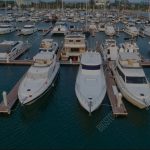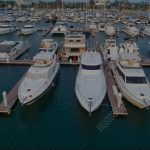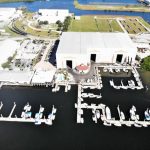 When purchasing a boat or yacht, one of the most crucial steps is hiring a marine surveyor to inspect the vessel for any potential issues. In the 33406 area, Suncoast Marine Surveying is a reputable company known for providing thorough and reliable marine surveying services.
When purchasing a boat or yacht, one of the most crucial steps is hiring a marine surveyor to inspect the vessel for any potential issues. In the 33406 area, Suncoast Marine Surveying is a reputable company known for providing thorough and reliable marine surveying services.
One common problem that marine surveyors in 33406 often come across is hull moisture and blistering. These issues can be indicative of more serious underlying problems with the vessel’s structure and can lead to costly repairs if not addressed promptly.
So, how should boat owners address these common problems when identified by a marine surveyor in 33406?
1. Seek Professional Advice: When a marine surveyor in 33406 detects hull moisture or blistering during an inspection, it is essential to seek professional advice from experts like Suncoast Marine Surveying. They can provide detailed insights into the extent of the damage and recommend appropriate solutions.
2. Understand the Causes: Hull moisture and blistering are often caused by water intrusion through cracks, poorly sealed fittings, or osmotic blistering due to prolonged exposure to water. Understanding the root cause of these issues is crucial in preventing their recurrence.
3. Regular Maintenance: To prevent hull moisture and blistering, boat owners should prioritize regular maintenance tasks such as checking for leaks, resealing fittings, and applying protective coatings to the hull.
4. Address Issues Promptly: Ignoring hull moisture and blistering can lead to further deterioration of the vessel’s structure and compromise its seaworthiness. It is crucial to address these issues promptly to avoid costly repairs down the line.
5. Consider Professional Repairs: In some cases, professional repairs may be necessary to fix hull moisture and blistering effectively. Suncoast Marine Surveying has a team of experienced professionals who can provide expert repair services tailored to each vessel’s specific needs.
6. Invest in Preventative Measures: To mitigate the risk of hull moisture and blistering, boat owners can invest in preventative measures such as installing moisture meters, using high-quality sealants, and implementing regular hull inspections.
7. Consult with Experts: Consulting with marine surveyors in 33406 like Suncoast Marine Surveying can help boat owners gain valuable insights into the best practices for preventing and addressing hull moisture and blistering issues.
8. Prioritize Quality Materials: When repairing hull moisture and blistering, it is vital to use quality materials that can withstand harsh marine environments and provide long-lasting protection against water intrusion.
9. Monitor Progress: After addressing hull moisture and blistering, boat owners should monitor the vessel’s progress regularly to ensure that the issues have been effectively resolved.
10. Schedule Regular Inspections: To prevent future problems with hull moisture and blistering, boat owners should schedule regular inspections with a marine surveyor in 33406. Suncoast Marine Surveying offers comprehensive inspection services to help boat owners maintain their vessels in top condition.
In conclusion, addressing common problems with hull moisture and blistering found by a marine surveyor in 33406 requires proactive measures, professional expertise, and a commitment to regular maintenance. By following these tips and seeking guidance from experts like Suncoast Marine Surveying, boat owners can ensure the longevity and seaworthiness of their vessels.r



 When purchasing a boat, one of the most critical steps is hiring a
When purchasing a boat, one of the most critical steps is hiring a  As a boat owner in Florida, one of the most important professionals you can hire is a
As a boat owner in Florida, one of the most important professionals you can hire is a 